Water funiculars
The funicular on the Parisian hill of Montmartre from 1900 to 1931 worked without an engine, solely due to gravity.
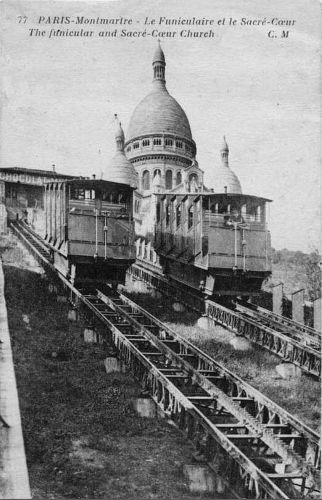
Like an elevator and a counterweight, the ascending and descending cars of the funicular were connected by a cable through a block at the upper station. This is a common solution, which allows to partially compensate the weight of one car by another and reduce the required power. But the French made it so that going down the car was ALWAYS heavier than going up.
Under the floor of the car there was a 5-cc water tank. Before the next flight, the servant of the lower station informed the upper one how many passengers he had. Upper read the number of "their" passengers and poured the appropriate volume into the tank. The upper cabin became heavier than the bottom, and the flight could begin. At the lower station, the tank was emptied.
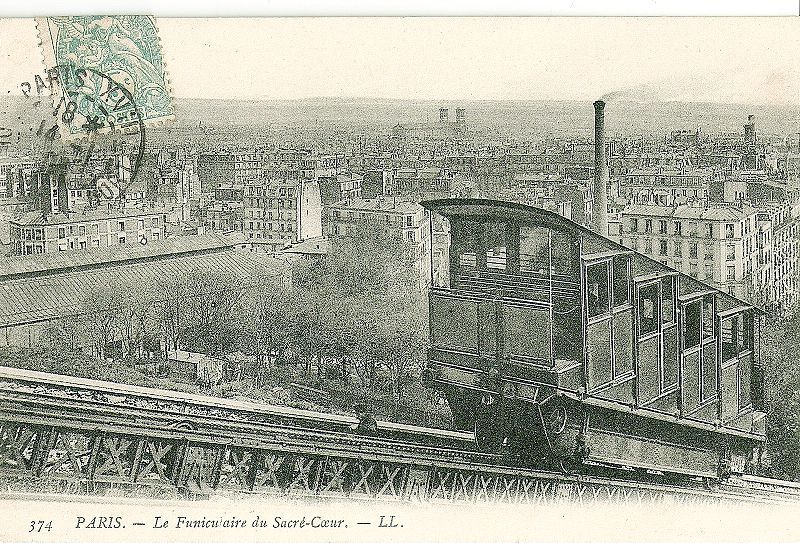
The beauty of the decision is spoiled by the fact that the water did not beat from the spring on the top of the hill, but was supplied there with a steam pump (so the engine, strictly speaking, was still at the funicular). I don’t know where the water flowed down to another tank or into the sewer. In any case, the article of 1900 indicates that the water for the funicular is supplied by the city at a fixed rate of 3 centimes per cubic meter.
')
The ticket for lifting was 10 centimes, for the descent - 5 centimes. Thus stimulated the presence of "live weight" at the top.
(In my opinion, the Parisians could go even further: let the passenger pay 15 centimes for the ascent, but get 1 for the descent. I suppose there would be many who want to earn money, and there would always be extra passengers at the upper station).
Docking stations from existing water funiculars in Portugal
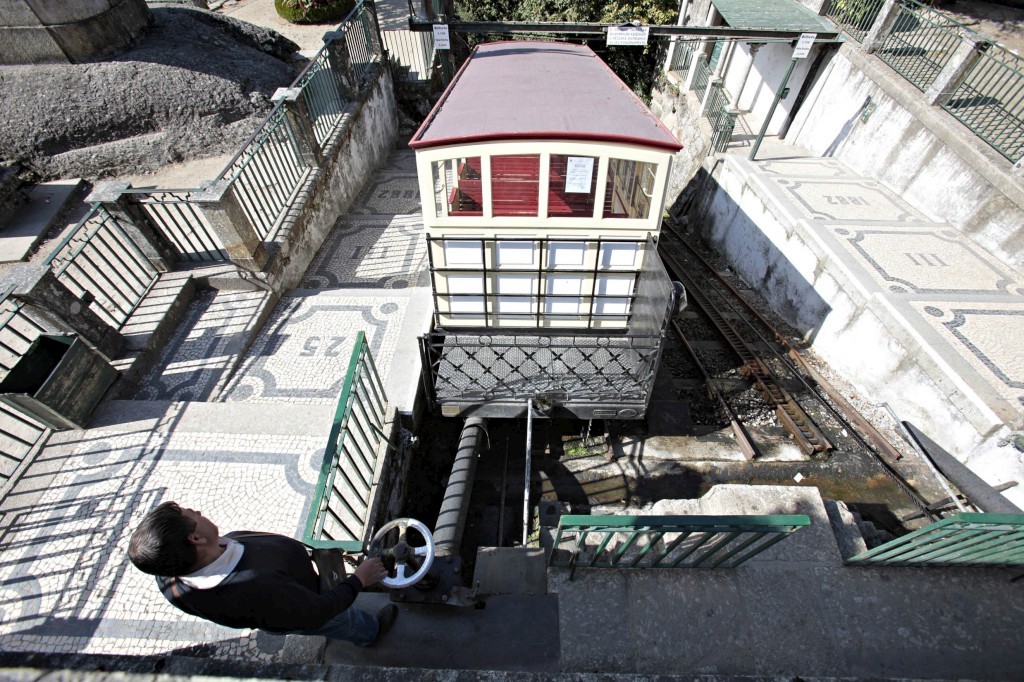
and in Germany :

Subspecies - British Lynton-Lynmouth Cliff Railway :
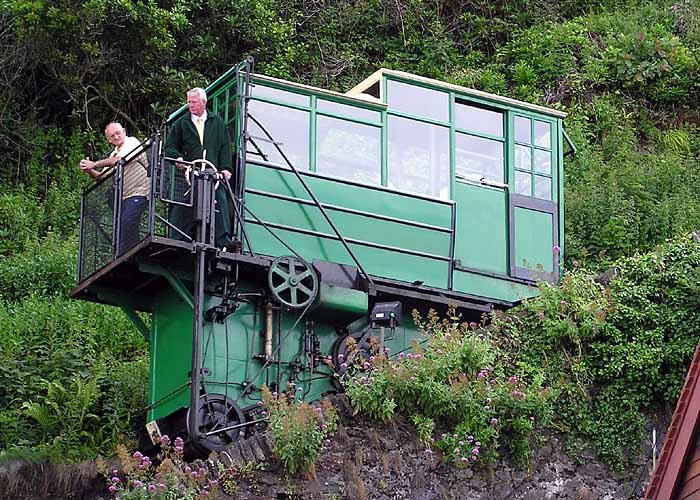
Here, the water from the bottom tank does not drain by default. Before start tanks of both cars are filled. Then the brakes are released and they begin to drain the water from the lower tank until the upper carriage outweighs and the traffic begins.
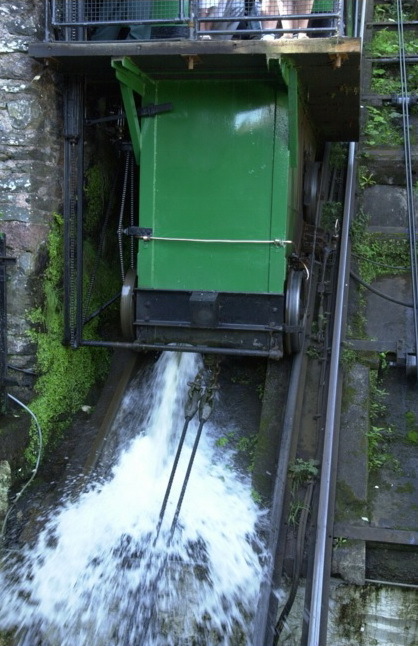
Finally, in Swiss Fribre, the technical solution reached its apogee. There is still running the funicular, the tank of which receives wastewater from the upper part of the city.
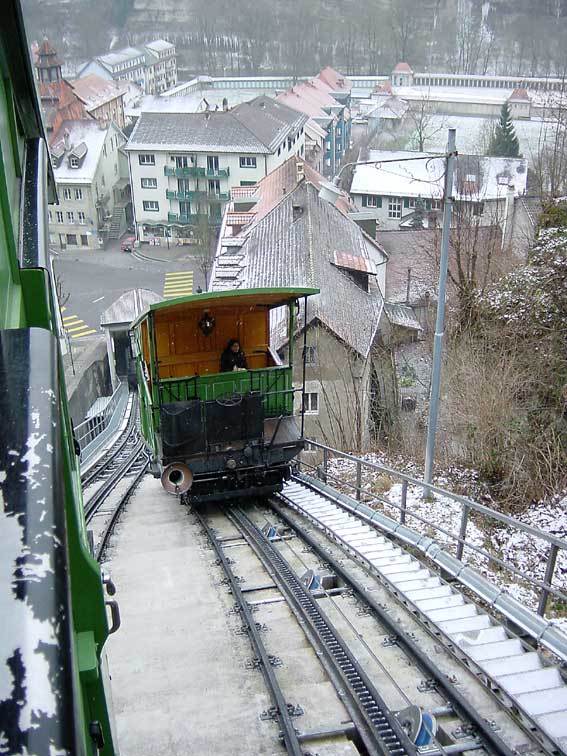
At the lower station, the sewage flows into the same sewer.

Yes, it smells . But energy efficient.

Like an elevator and a counterweight, the ascending and descending cars of the funicular were connected by a cable through a block at the upper station. This is a common solution, which allows to partially compensate the weight of one car by another and reduce the required power. But the French made it so that going down the car was ALWAYS heavier than going up.
Under the floor of the car there was a 5-cc water tank. Before the next flight, the servant of the lower station informed the upper one how many passengers he had. Upper read the number of "their" passengers and poured the appropriate volume into the tank. The upper cabin became heavier than the bottom, and the flight could begin. At the lower station, the tank was emptied.

The beauty of the decision is spoiled by the fact that the water did not beat from the spring on the top of the hill, but was supplied there with a steam pump (so the engine, strictly speaking, was still at the funicular). I don’t know where the water flowed down to another tank or into the sewer. In any case, the article of 1900 indicates that the water for the funicular is supplied by the city at a fixed rate of 3 centimes per cubic meter.
')
The ticket for lifting was 10 centimes, for the descent - 5 centimes. Thus stimulated the presence of "live weight" at the top.
(In my opinion, the Parisians could go even further: let the passenger pay 15 centimes for the ascent, but get 1 for the descent. I suppose there would be many who want to earn money, and there would always be extra passengers at the upper station).
Docking stations from existing water funiculars in Portugal

and in Germany :

Subspecies - British Lynton-Lynmouth Cliff Railway :

Here, the water from the bottom tank does not drain by default. Before start tanks of both cars are filled. Then the brakes are released and they begin to drain the water from the lower tank until the upper carriage outweighs and the traffic begins.

Finally, in Swiss Fribre, the technical solution reached its apogee. There is still running the funicular, the tank of which receives wastewater from the upper part of the city.

At the lower station, the sewage flows into the same sewer.

Yes, it smells . But energy efficient.
Source: https://habr.com/ru/post/394225/
All Articles